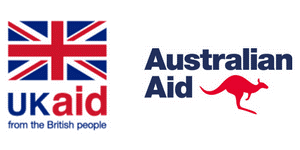Frontier Incubators, a capacity building programme working with 19 incubators and accelerators in the Asia-Pacific region invited the GSMA Ecosystem Accelerator team to participate in a workshop on 15th November in Singapore. The session was supported by the Australian Department of Foreign Affairs and Trade (DFAT), represented by its Chief Innovation Officer & Chief Scientist Sarah Pearson. The event focused on issues around building start-up ecosystems in the region. With diverse backgrounds, in terms of markets and industries, the participants provided valuable content that rings true to start-ups and technology innovation programmes within the mobile industry. We picked up some of this content and thought to share with you.
Mapping yourself in the Ecosystem
Building a start-up incubator or accelerator programme in a given ecosystem is not an easy task. It is even more difficult in a region like Asia Pacific where there can be insufficient data and lack of information. Thus, mapping and highlighting other key players in the ecosystem and understand their contributions is vital. The mapping exercise helps the ecosystem players understand the best role to play, whom to feed and for whom to feed one’s incubation and acceleration pipeline. This is applicable for programmes supporting tech, non-tech, social enterprise, funding bodies and even local mobile operators looking to understand their local start-up ecosystem. As mobile operators in the Asia Pacific region increasingly play an active role within their respective start-up ecosystem, it is important that they do not work in silos, rather they should pinpoint, map out and work with other local start-up ecosystem builders such as tech hubs.
The topic of tech hubs in the Asia Pacific region is close to the heart of the Ecosystem Accelerator programme. In March 2018, we published a landscaping research on active tech hubs in region: Asia Pacific: a look at the 565 active tech hubs of the region’s emerging economies.
Bridging the gender diversity gap in technology
During the session, gender underrepresentation in the tech ecosystem was revealed as partly a result of long-held perceptions and the systems that supports these perceptions. An example is the perception that women do not excel in science, technology, engineering and mathematics (STEM) field. These views can result in a self-fulfilling prophecy which can in turn reduce the chances of women exceling in STEM careers or discourage women from participating in the STEM fields altogether. The audience were advised to encourage more people, women and men, to celebrate more women leaders in STEM and participate in campaigns targeted at closing the gender gap.
Some promising trends can be highlighted when looking at the start-ups space in Asia Pacific. When looking at the top applications received from start-ups in the region for the 3rd Round of our GSMA Ecosystem Accelerator Innovation Fund, we noted that 53 per cent of the start-ups have been founded or co-founded by women entrepreneurs – this compares to 20 per cent for the second Round of the Fund.
 Sarah Pearson, Chief Innovation Officer and Chief Scientist at Australian Department of Foreign Affairs and Trade.
Sarah Pearson, Chief Innovation Officer and Chief Scientist at Australian Department of Foreign Affairs and Trade.
Helping entrepreneurs and investors to speak the same language
One of the major undertakings for a start-up is fundraising. The fundraising journey is often a demanding one as investors differ in their expectations of venture-backed businesses.
It is also not an easy journey on the other side of the funding table. Venture capital funds, corporate venture capital set-ups, angels, incubators, accelerators and other organisations trying to support new ventures also need to find the right companies that fit their criteria. Hence, why Village Capital has drafted a document named “VIRAL Pathway” (Venture Investment-Readiness and Awareness Levels), a framework to help entrepreneurs and investors speak the same language. The framework helps entrepreneurs become more self-aware and better able to articulate how ready they are for investment while allowing investors to communicate the point at which they want to invest.
In 2016, Village Capital licensed VIRAL to 26 accelerators, incubators and entrepreneur support organisations around the globe. Village Capital found out that 80 per cent of those entrepreneur support organisations reported that the framework better prepared companies for investment. Similarly, 92 per cent of participating companies said the framework made them better prepared for investments.
During the session, we had the opportunity to put the impressive framework to work. You can also read more about VIRAL on this blog post.
Mapping of Start-ups at the Beginning of an Accelerator Programme on Viral Pathway. The framework image can be found here and the details of the framework here.
We would like to end this blog by thanking Frontier Incubators Programme and Second Muse for inviting us to participate in the workshop and allowing us to share our learnings with other participants and partners.
The Ecosystem Accelerator programme is supported by the UK Department for International Development (DFID), the Australian Government, the GSMA and its members.


